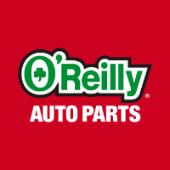-
Welcome to Auto Parts Forum
Whether you are a veteran automotive parts guru or just someone looking for some quick auto parts advice, register today and start a new topic in our forum. Registration is free and you can even sign up with social network platforms such as Facebook, X, and LinkedIn.
The Evolution of Automotive Fuel Systems
-
Similar Topics
-
By Counterman
Holley Performance Brands announced an expansion of its automotive chemicals portfolio with three new products: NOS Octane Booster, Holley Carburetor Cleaner and Baer Spray Brake Cleaner. Holley said the new product lineup will deliver solutions for automotive enthusiasts and racers seeking improved power output, superior cleaning and enhanced system efficiency. The announcement follows the news of Holley’s new agreement to be the exclusive developer and distributor of Cataclean products in North America.
“The expansion of our chemicals portfolio reflects our ongoing commitment to delivering high-performance solutions that our customers trust,” said Matthew Stevenson, president & CEO, Holley Performance Brands. “By leveraging our iconic brands in this market, we are equipping drivers with the tools to enhance their vehicles’ performance, safety and reliability and strengthening our role as a global leader in the automotive aftermarket.”
Boosting Power and Cleaning with Confidence
link hidden, please login to view said the Octane Booster from NOS is designed to raise octane levels of fuel by up to five numbers for high-compression sport and race engines. The company added that it delivers improved horsepower, reduces NOX emissions and promotes better engine knock protection. The sensor-safe, made in the USA formulation fills a critical role of preventing pre-ignition and damage and its significant octane-boosting capabilities make it exclusive for off-road, race-only enthusiasts looking for maximum power, Holley said. The company also said the Holley Carburetor Cleaner is formulated to be tough on deposits and carbon buildup while remaining safe for sensors, plastics and metal components. Engineered for carburetors and throttle bodies, its versatility extends to a variety of engine types to restore responsiveness and ensure smoother operation. Made in the USA, this professional-grade product is designed for both performance enthusiasts and everyday drivers, the company said.
link hidden, please login to view added that the Baer Spray Brake Cleaner is designed to optimize brake system performance. Made in the USA, Baer Spray’s low-VOC formula removes machining oils, factory coatings, dirt and grease, ensuring a proper break-in for new pads and rotors. Baer Spray helps reduce brake noise, enhance brake bite and improve overall braking efficiency – making it an essential tool for both professional mechanics and DIY enthusiasts. Holley said the NOS Octane Booster and Baer Spray Brake Cleaner are now available, while the Holley Carburetor Cleaner is available for pre-order.
The post
link hidden, please login to view appeared first on link hidden, please login to view.
link hidden, please login to view -
By Counterman
link hidden, please login to view announced the creation of NEXUS Automotive Turkey, which it said will increase development opportunities within the N! Community in the country. The new entity is based in Ürmaniye, Instanbul. With a presence in 145 countries, with 523 members, 2,319 WDs, 96 suppliers and close to 10,000 retail stores, NEXUS said it is equipped to strengthen its efforts in Turkey.
A news release from NEXUS announcing the development said NEXUS Automotive Turkey will strive to become a leading force in the Turkish aftermarket, based on turnover, product range and distribution capacity. The new structure will play a critical role in enhancing NEXUS positioning, developing next-generation collaborations, smart supply solutions and the digital transformation shaping the future of the industry with its key stakeholders. “With NEXUS Automotive International’s global strength, extensive supply network and innovative solutions, NEXUS Automotive Turkey’s ambition is to unlock the full potential of the Turkish automotive aftermarket,”
link hidden, please login to view explained. The founding shareholders of NEXUS Automotive Turkey include NEXUS Automotive International, Dinamik and Genckaya, demonstrating the intent of striking a balance between international support and the expertise in the local automotive aftermarket. NEXUS said the initiative aims to satisfy the Turkish market demand for new solutions of leaner supply chains, digital transformation and alternative sourcing strategies. Turkey is also a very important region of the aftermarket, with over 30 million cars with an average age of
link hidden, please login to view. “We are very excited to launch NEXUS Automotive Turkey. Its role will be crucial in strengthening our position as leader in a market with great potential. The structure will also help with aligning more closely with both our suppliers’ and members’ expectations. Developing the Turkish automotive aftermarket will be instrumental to our next chapter,” said CEO Gaël Escribe.
The post
link hidden, please login to view appeared first on link hidden, please login to view.
link hidden, please login to view -
By Counterman
US Motor Works announced the release of new
link hidden, please login to view Professional Series fuel pump modules in March, 2025. Fuel pump assembly application coverage includes several Audi, Toyota, Infiniti and Nissan models.
The
link hidden, please login to view provides full details. The post
link hidden, please login to view appeared first on link hidden, please login to view.
link hidden, please login to view -
By OReilly Auto Parts
SPRINGFIELD, Mo., March 13, 2025 (GLOBE NEWSWIRE) -- O’Reilly Automotive, Inc. (the “Company” or “O’Reilly”) (Nasdaq: ORLY), a leading retailer in the automotive aftermarket industry, today announced that its Board of Directors (the “Board”) approved a 15-for-1 split of its common stock, to be effected in the form of a one-time special stock dividend.
link hidden, please login to view -
-
By Counterman
link hidden, please login to view announced the release of 164 new automotive repair solutions this month for its Light Duty segment. The new products join a growing Light Duty catalog of over 133,000 SKUs, offering millions of new sales opportunities for automotive parts distributors, retailers and repair shops, as well as more accessible solutions for vehicle owners, according to Dorman. This month’s releases include a dozen new Dorman OE FIX repair innovations that provide customers with improved performance and repair convenience that they may not be able to obtain with parts acquired from a dealership,
link hidden, please login to view said. The company added that one of those OE FIX innovations is an upgraded camshaft bridge cover designed for select Volkswagen and Audi vehicles equipped with 2.0L engines. The original equipment cover may fail from pressure pulsations that can cause internal component damage. The Dorman replacement features several design improvements that help mitigate the pulsations and prevent filter clogging that can starve the engine for oil and harm vehicle performance.
“At Dorman, innovation drives everything we do,” said Eric Luftig, senior vice president. “We’re proud to bring groundbreaking solutions to the automotive aftermarket, helping consumers find the right parts when they need them most. Our commitment to empowering vehicle owners and repair professionals with quality, accessibility and reliability continues to fuel our passion for progress.”
Dorman said it continues to expand its components for turbocharger repair and replacement, adding a new OE FIX oil feed line constructed of braided stainless steel over the line’s flexible sections. The line is engineered to offer a more durable replacement compared to the original equipment’s braided nylon sheathing used in certain Ford Escape and Ford Fusion models, the company said.
Additional highlights for March include:
An OE FIX radiator outlet hose for select Dodge Durango and Jeep Grand Cherokee SUVs. The line features a rugged aluminum Y-connector in place of the factory’s plastic connector. A main battery fuse with coverage designed for a significant number of Cadillac and Chevrolet vehicles, and engineered to match the performance of the original equipment fuse. A new transmission oil cooler designed to match the performance of the factory cooler on select Dodge Durango SUVs. The cooler joins a comprehensive lineup of quality fluid coolers from Dorman.
The post
link hidden, please login to view appeared first on link hidden, please login to view.
link hidden, please login to view
-



Recommended Posts
Join the conversation
You can post now and register later. If you have an account, sign in now to post with your account.
Note: Your post will require moderator approval before it will be visible.